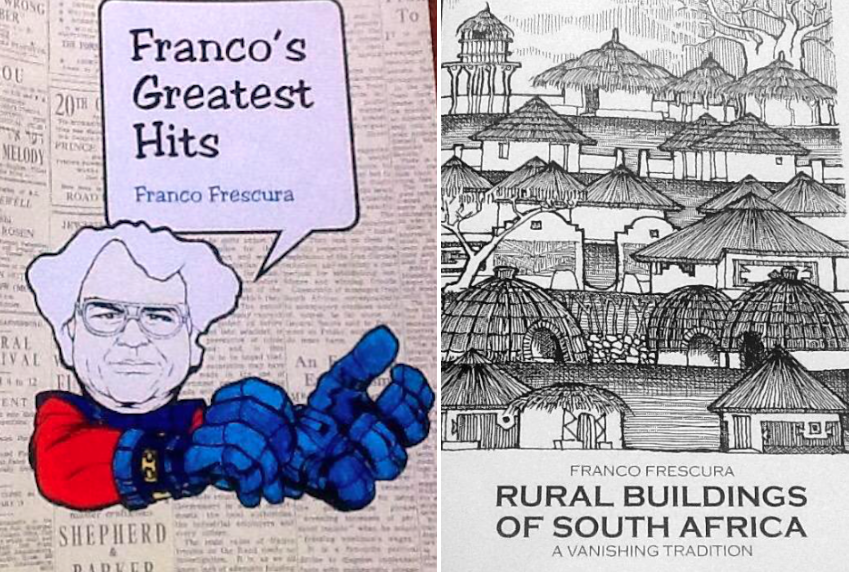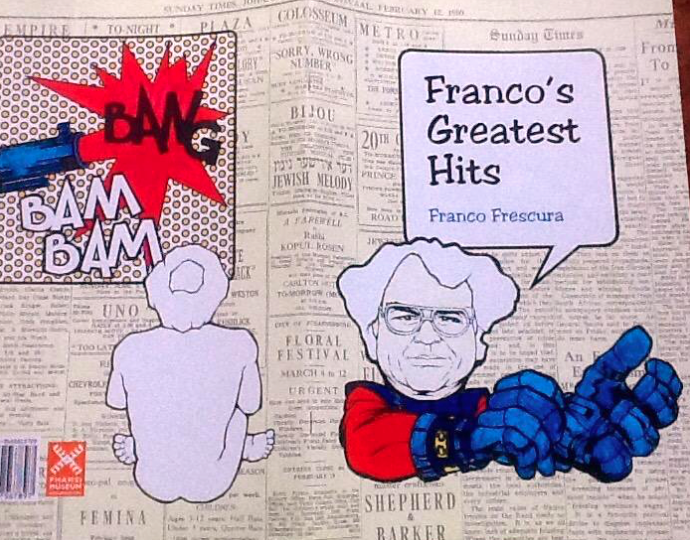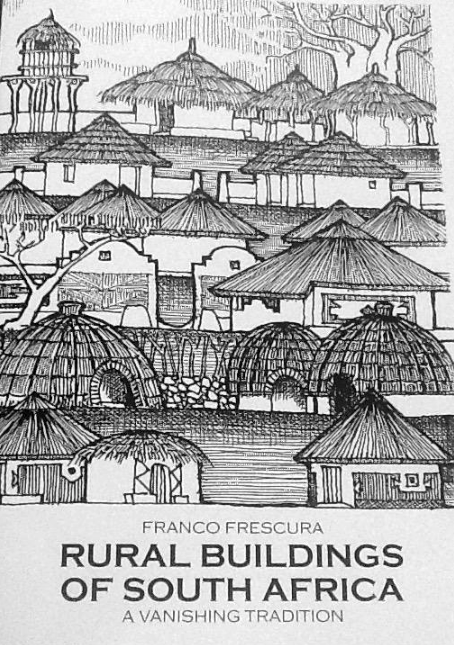
Phansi Art Museum is a Durban ubuntuArt Museum which collects to celebrate African art and beauty, as they describe on their website. Phansi holds a fine collection of art, crafts and artefacts (beadwork, traditional medicine containers, dolls, traditional domestic utensils etc.). They also have a publications department and are bringing out books and catalogues that immediately proclaim collectability.
Two of their publications have recently come my way, as review copies given to me by their author, Franco Frescura. Both published in 2018, these A4 sized books are worth acquiring.
Franco is an architect, an artist, a philatelist and an academic. He is a South African of wide interests and many talents who has gathered knowledge and spread his view of the world in his books and articles.
Franco first came to public attention with a certain notoriety as a student at Wits in the seventies when his brand of humour and satire was published in the Wits student newspaper. He began drawing a weekly satirical political cartoon page, called the John Burger Saga. He took on the prime minister and Parliament of the time, was arrested, charged with defamation and found himself stateless with the removal of his South African citizenship for treating the state with contempt. It was a brave thing to do in an apartheid state that had a heavy handed attitude to criticism of all sorts. It gave Franco immediate publicity and support while Wits also charged him with bringing the institution into contempt. Today one wonders about the mentality of state and university that found undergraduate humour a threat. It was regarded as political protest but it did not bring down the state. It all now seems such a puerile cat and mouse game that placed a promising young man’s architectural career on hold for a decade. We have come a long way and Franco is still around.
The human spirit is indomitable and Franco ultimately qualified as an architect, joined the teaching staff at Wits, moved on to an M Arch and began to document vernacular architecture and rural South African architecture. He later completed a PhD and his book on Rural Shelter in South Africa was published by Ravan Press in 1981. It’s a collectors item these days. It showed Franco’s talents for meticulous fine architectural drawings of South African building forms. Franco studied and catalogued the details of rural habitations and a way of life that was fast disappearing. He spent ten years working at the University of Port Elizabeth in the eighties and during that phase of his career, he surveyed 17 small colonial towns and villages. His object was to contribute to the conservation of small towns and the preservation of their heritage.
In 1994 Franco took up a position with the SA Post Office and was responsible for the design and production of South Africa’s stamps. It was perhaps the last great era of good philatelic design. Franco returned to academe in 2002 when he became Professor and Chair of the Department of Architecture at the University of KwaZulu-Natal. In 2007 he moved over to the post of Honorary Professor and Senior Research associate in the Centre for Literature, Communication and Media Studies also at the University of KwaZulu-Natal. These career moves are an expression of the ease which Franco moves between architecture, art and media.
Franco’s Greatest Hits is a slender volume that captures a variety of Franco’s drawings, artworks, cartoons and illustrations over a long career. The Phansi Museum has organized (October 2018) an exhibition of Franco’s early graphics and artworks. Many of Franco’s early cartoons were seized by the Security policy and when their archives were systematically destroyed during the transition period it is thought that this work was lost. This book is important because it documents, saves and gives an historical reference point for the man, his work and an era. It is an instantly collectable work. In its 64 pages it reproduces with short explanations providing context, many of Franco’s graphics, drawings and posters.
Book Cover
My favourites are his poster advertising the architecture of Uitenhage and the dramatic save the Colosseum petition poster (sadly the battle to save the Colosseum, the magical theatre in Johannesburg in the eighties was lost and the building demolished). There’s a marvellous poster for the Rand 77 Philatelic exhibition with the skyline of Johannesburg that sums up a city in an ink drawing. The pop art graphics make you see double. This is a record of a different kind of struggle art.
The Colosseum in 1953
Franco’s second booklet, also published by the Phansi Museum is his Rural Buildings of South Africa, A Vanishing Tradition. He has dedicated this study to the rural builders of Southern Africa and it is a celebration of the work of the unknown master craftsmen of the countryside. This volume was produced to provide supporting material for a series of lectures organized by the Phanzi Museum on the subject, Our Vanishing Heritage. This book is a significant contribution to the study of indigenous architecture in South Africa. Franco describes the domestic structures of rural architecture based on his personal taxonomy. He traces the linkages between one domestic form and the next. Part 1 explores the architecture of settlement and Part 2 details the Southern African dwelling. Franco provides an historical context for understanding the dwellings of the Khoikhoi, the Zulu, the Cape Nguni, the Swazi, the Tsonga, the South Ndebele, the Sotho, the Tswana, the Pedi and the Venda. The approach is descriptive and informative with facts and interpretation of relationships of form and function, design and decoration densely organized and presented. It is aimed at anyone taking the time and trouble to understand that vanishing building tradition and his writing is accessible. I now wish Franco would tackle the challenge of low cost urban housing. I believe his expertise could be a resource for urban development.
Book Cover
This book is an extension of his early work on Rural Shelter and in 2016 the University of KwaZulu-Natal Press brought out his and Joyce Myeza’s Illustrated Glossary of Southern African Architectural terms, which is both a dictionary and a teaching tool for all types of South African architecture and also illustrated by Franco. I reviewed this book last year (click here to view) and all copies ordered for the Johannesburg Heritage Foundation were sold; we have now ordered and received a second batch.
2018 Guide Prices: Both books are available from Phansi Museum for R120 – contact admin@phansi.com. The Johannesburg Heritage Foundation has copies for Joburg readers at the same price - contact mail@joburgheritage.co.za
Illustrated Glossary of Southern African Architectural Terms is also available from the JHF (R250).


